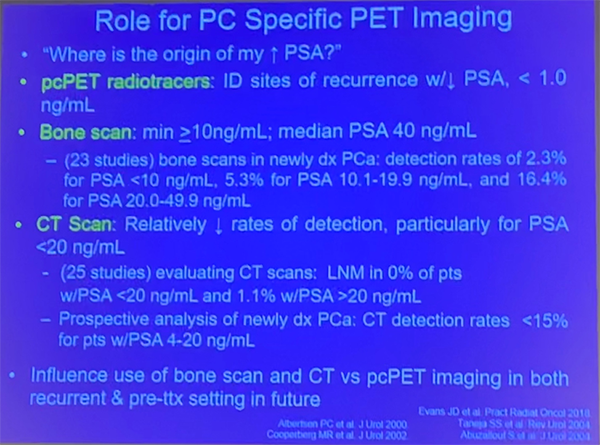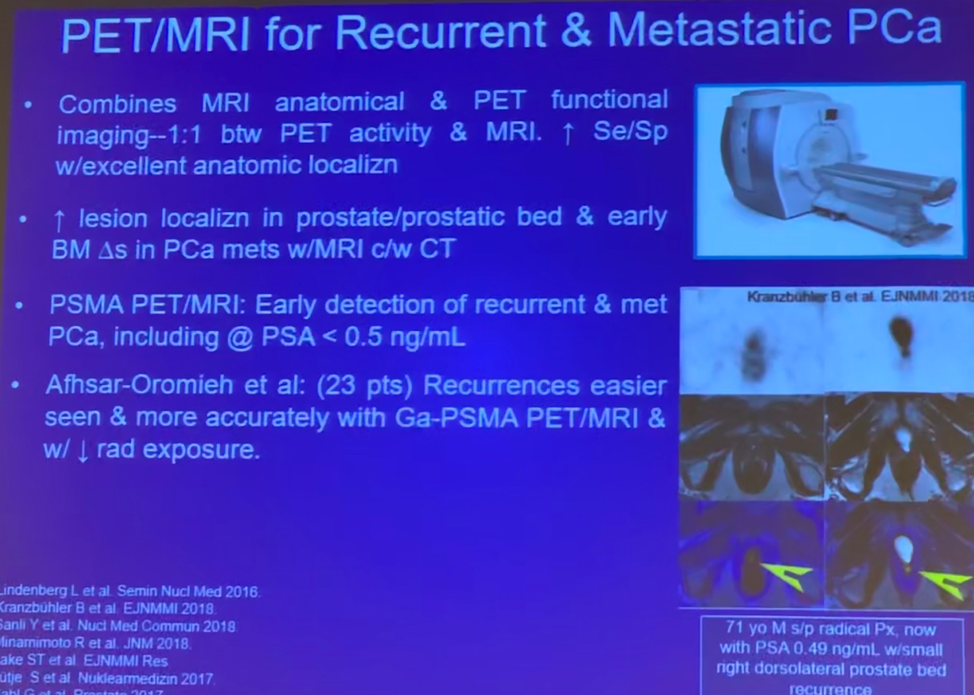Furthermore, the detection can now occur at far lower PSA levels given that tumor burden no longer needs to reach a level that can be detected by traditional techniques. Combined PET/MRI improves detection rates in the local surgical bed following prostatectomy by combining the spatial resolution of MRI with the high sensitivity of PET.


Presented by: Aradhana M. Venkatesan, MD, Department of Diagnostic Radiology, University of Texas MD Anderson Cancer Center, Houston, TX, USA
Written by Justin T. Matulay, MD, Urologic Oncology Fellow and Ashish M. Kamat, MD (@UroDocAsh), Professor, Department of Urology, Division of Surgery, The University of Texas MD Anderson Cancer Center, Houston, TX at the 13th Update on the Management of Genitourinary Malignancies, The University of Texas (MDACC - MD Anderson Cancer Center) November 9-10, 2018, Dan L. Duncan Building, Houston, TX


